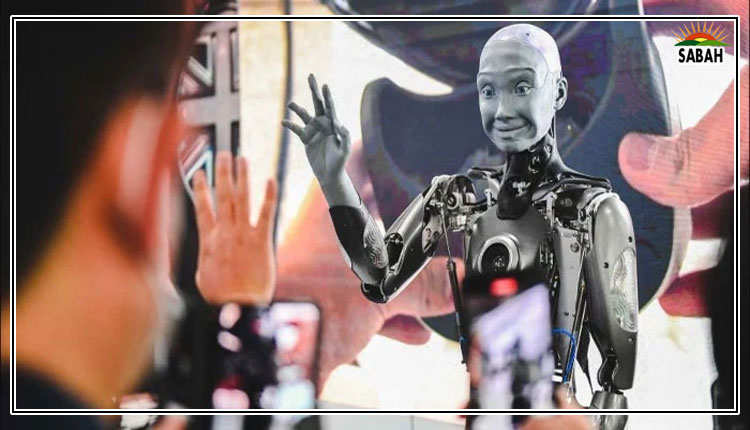The race for AI dominance…Shaza Arif
The pursuit of technological advancements powered by artificial intelligence (AI) has become crucial for startups and organizations around the world. There is an increasing realization of the need to be at the forefront of cross-cutting technologies in the competitive tech market.
In this context, tech giants such as OpenAI, Google, xAI, Meta and Microsoft, etc, are continuously racing to strengthen their chatbots/search engines with AI. In fact, news about new AI-powered initiatives from tech giants has stormed the internet in the last two weeks.
OpenAI has been consistently making headlines (for better or worse) ever since the debut of ChatGPT and its successive versions (GPT-3.5, GPT-4 and GPT-4o). It has announced that it has begun training a new flagship AI model, which is designed to replace GPT-4 technology.
It will power chatbots, create images, enhance search engines and function as a digital assistant. The model is also expected to employ artificial general intelligence (AGI) the ability of machines to perform tasks on par with human capabilities.
In parallel, Google has announced new additions to its AI Model series Gemini. It recently launched Gemini 1.5 Pro with a token window of two million units. The version supports approximately 35 languages and has improved reasoning and better image recognition. According to its CEO Sundar Pichai, the model has the longest context window of any model, implying that it would be able to process more data compared to other similar AI models by its rivals. Notably, Gemini 1.5 was launched just one day after OpenAI launched the GPT-4o version, underscoring the nature of the ongoing competition.
Elon Musks startup, xAI, is also working actively in this direction. The startup has raised $6 billion this week, increasing its valuation to $24billion. The newly acquired funding will be used to create cross-cutting infrastructure, launch new products and expedite the creation of new technologies. Grok an enhanced version of ChatGPT-4 is one of the prominent initiatives announced by xAI. As of now, the chabot is only available to Xs (formerly Twitter) premium subscribers.
The chabot has access to real-time information via X, is designed to answer questions in a witty style, and has a rather rebellious nature. Last week, Musk revealed his plans to power the chatbot with a supercomputer.
Meta is also striving to keep up with such ventures. Last week, a research paper published by the Chameleon team quickly picked up by different media outlets revealed a multimodal language model named Chameleon. The models claimed accuracy and ability to jointly reason over text and images equip it with new capabilities, setting it apart from the previous models.
While Microsoft has entered into a multi-billion dollar collaboration with OpenAI to accelerate breakthroughs in AI, it has been working on its own models as well. Earlier this month, Microsofts upcoming language learning model, MAI-1 was revealed. The model will be far larger than previously trained models by Microsoft and better positioned to compete with its rivals.
While we continue to be impressed by AIs current level of integration in search engines and chatbots, more innovations are yet to unfold. In fact, the hybrid-AI search engines being used at the moment may evolve to a new level, offering more human-like capabilities. Such fast-paced developments in the tech world come with certain implications.
The expedited efforts and growing investments by tech giants reflect the increasingly high stakes vis-a-vis who gets to shape, impact, monopolize and ultimately control the future tech landscape. Furthermore, the surge of tech advancements manifests investor interest in this sector. However, this rapid progression also highlights a significant challenge: legal frameworks are struggling to keep pace with the speed of technological developments, leading to potential gaps in regulation and oversight. Europes AI Act, drafted by the European Commission in 2021, was finally approved on May 22 but will apply in 2026 in the 27-country bloc.
While these models may become capable of processing more data, upholding ethical concerns also remains a challenge. Notably, the duo leading OpenAIs Super Alignment team (tasked to ensure that future AI models adhered to safety standards) Ilya Sutskever and Jan Leike parted ways with the company this month.
The departure of key individuals raises concerns and suspicions vis-a-vis the ethical aspects frequently raised over AI. Interestingly, Elon Musk, one of the co-founders of OpenAI, has filed a case against the startup, claiming that it has deviated from its initial purpose of serving humanitys interests.
Since startups have already suggested using AGI, surveys indicate that 50 per cent of AI experts believe AGI will be available by 2060. However, recent claims by different companies indicate that the technology might be available even earlier than predicted. This can have a pronounced impact across several sectors and society as a whole.
The last two weeks have provided a stark illustration of the fierce competition for AI supremacy, with tech giants relentlessly advancing the boundaries of what technology can accomplish. This period has been marked by groundbreaking cross-sector technologies, substantial financial investments, escalating innovation, and evolving expectations.
As these systems develop and grow, they are impacting society notably. The legal and ethical frameworks urgently need to catch up to address these new realities. These advancements are poised to fundamentally transform how we interact with the internet and access information. Indeed, it is no longer that we use technology we are living it.
Courtesy The News












